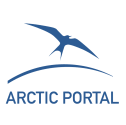P. Whitney Lackenbauer, Zachary Zimmermann & Samuel Pallaa Huyer
Several Canadian Indigenous organizations have released recent strategies and reports on Arctic sovereignty and security, all of which share a common theme: there can be no Canadian sovereignty in the Arctic without respect for Indigenous rightsholders and leadership in agenda setting and decision making. In June 2025, Inuit Tapiriit Kanatami (ITK) released An Inuit Vision for Arctic Sovereignty, Security and Defence, which highlights the need for Inuit perspectives to be central to Canada's national security efforts and calls on the Government of Canada to prioritize human security in its defence planning. In September 2025, Nunavut Tunngavik Inc. (NTI) and the Government of Nunavut (GN) released the Nunavut Arctic Sovereignty and Security Strategy, which outlines five pillars for a secure and sovereign Nunavut that also emphasize human security; the importance of nation-building infrastructure projects to reduce supply chain vulnerabilities, support national security, and unlock economic opportunities; and the need for sustained investment in community-based security. The Assembly of First Nations (AFN) Yukon Region report on Yukon First Nations Defence and Security, released in August 2025, reiterates that Indigenous Peoples must be acknowledged and treated as essential decision-making partners in Arctic defence and security, offering specific recommendations to the federal government on how to improve information sharing, co-planning, and funding for defence and security initiatives. These documents advocate for a holistic view of security that includes community well-being, economic prosperity, and the environment, in addition to traditional military defence.
Douglas Causey & Eric Bortz
Introduction – A Warming Arctic
The Arctic is warming faster than any other region on Earth, with the rate of warming being two to three times greater than the global average (AMAP, 2024). Warming is shifting habitats northward, disrupting wildlife and altering ecosystem dynamics. Rapid warming is dramatically transforming the Arctic environment, from vanishing sea ice to thawing permafrost to more extreme weather (Pecl et al., 2017). As the Arctic warms, permafrost (permanently frozen ground) is thawing, releasing greenhouse gases like methane and carbon dioxide, which further amplify warming. An unexplored vulnerability for the Arctic region now and in the immediate future is the rapid thawing of permafrost due to climate change, with concomitant emerging risks to human and animal health (Hedlund et al., 2014). Permafrost contains a vast microbial diversity, including bacteria, viruses, and fungi that have been frozen for millenia. As permafrost thaws, these microbes can become active again, potentially causing new or re-emerging infectious diseases in humans and animals (Caruso & Rizzo, 2025, Findlay, 2025). The risk is particularly high for zoonotic diseases, as thawing permafrost alters the habitats and migration patterns of wildlife that can serve as disease reservoirs (Parkinson & Evengård, 2009).
Recognizing permafrost thaw as one of the greatest vulnerabilities in the Arctic is crucial for mobilizing the resources and partnerships needed to address this urgent challenge (Ramage et al., 2021). By working across disciplines and knowledge systems, and by centering the voices of Arctic communities, more effective strategies should be developed for monitoring, mitigating, and adapting to the far-reaching impacts of permafrost thaw in the rapidly changing North.
Ekaterina Zmyvalova
This note introduces the Symposium for Early Career Researchers Working with Indigenous Issues, held at Mid Sweden University on 26–27 August 2025. The event brought together Master’s, PhD, and postdoctoral researchers working on Indigenous topics from diverse disciplinary backgrounds. Organized by the Subject of Law and the Network for Research on and with the South Saami Society, the symposium aimed to facilitate academic exchange and interdisciplinary dialogue in a field where researchers often work in isolation. It is part of broader institutional efforts to strengthen Saami-related research and education, and it is planned to become an annual event integrated with a forthcoming summer course on Indigenous Peoples’ rights.
Tatiana Petrova
Calotte Academy 2025 unfolded as a shared journey across the European North. In 2025, the Calotte Academy gathered around the theme “The Future of Europe – A Northern Point of View”. Over six days, the Academy moved from Rovaniemi to Luleå and through Kautokeino, Hetta, Inari and Sodankylä, travelling across the borders of the European Arctic. During that week, the Academy held 28 presentations in nine sessions across seven locations. Over the week, students, scholars, Indigenous representatives and local actors spent long hours on the road and in discussions, sharing meals, landscapes and perspectives.

Designed & hosted by Arctic Portal
